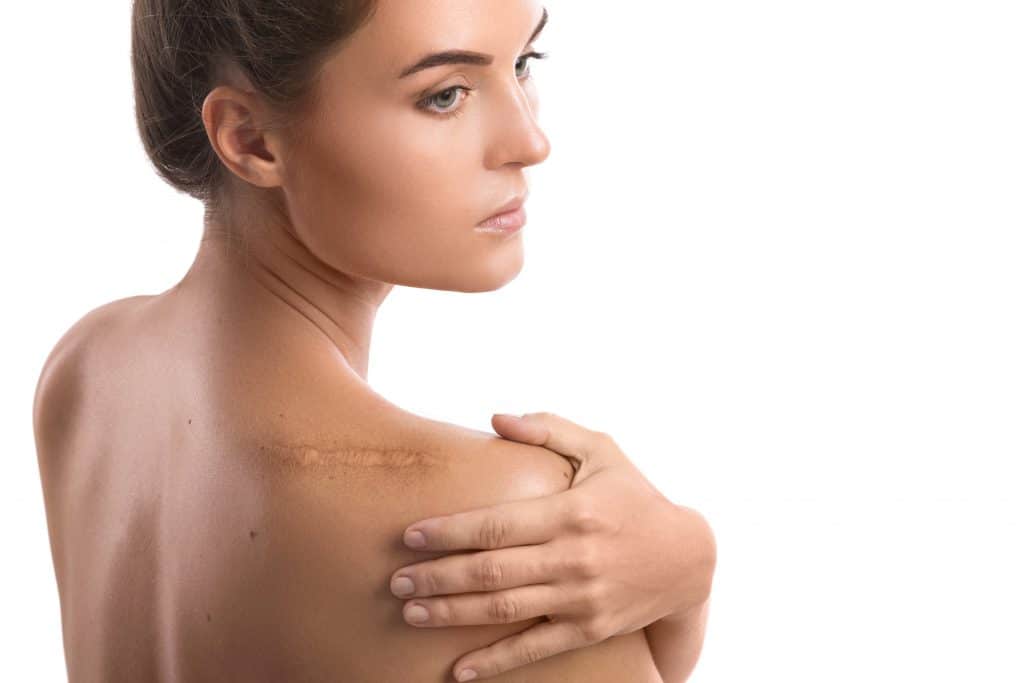‘Skin and subcutaneous fascia produce substance that communicate and respond in an autocrine or paracrine mode, affecting organs and structures that are seeming far from each other. When the integrity of the skin or the subcutaneous fasciae has been altered, or the healing process disturbed, it becomes a source of symptoms that are not merely cutaneous. The consequence is symptomatology which is not limited to the body area where the scar is located.’
In the developed world alone, each year 100 million people will develop scars: including 55 million from elective operations and 25 million from operations after trauma. Current statistics estimate that over 50% of post surgical patients will experience scar related complications.
It sounds scary, but any wound which breaches the dermis results in scarring, no matter how the wound occurred, or how insignificant it seemed at the time. Its a normal biological process, and although the replacement tissue that forms the scar differs from the original tissue, normal healthy scarring is intended to restore or preserve tissue integrity and function.
On the other hand, if any aspect of the process is faulty or mismanaged, pain and dysfunction can occur. Sometimes this is immediate and at debilitating levels, other times the effects aren’t noticed until much later in life. As I like to say in clinic, there is no expiration date on scars!
Soft tissue massage is highly recommended from early on in the healing process to reduce tightness, stiffness, pain and itching, and to increase the range of motion of affected tissues.
There is some additional information on the Neuromuscular Testing and Treatment page.
Scar formation – a bit more detail
Wound healing, and therefore scar formation, is a complex physiological response to injury consisting of four overlapping and precisely programmed stages: Homeostasis, Inflammation, Proliferation and Remodelling. Any interruption, aberrance or prolongation of the process can result in delayed, improper, or impaired healing and complications. Where possible, in the following explanations the normal healing process has been simplified to make it easier to understand.
Homeostasis: Within seconds after the initial injury, ruptured vessels leak blood-borne cells, proteins and platelets into the surrounding tissues, initiating the formation of a clot in order to slow or stop the loss of blood. Once the bleeding is relatively controlled various chemicals stimulate the migration of inflammatory and reparative cells to the area.
Inflammation: This stage typically lasts from one to four days. Various white blood cells migrate locally to clean up any potential contamination and mediate the inflammatory response. The area typically swells and remains warm as a result, and remains this way until the skin is repaired.
Proliferation: This overlaps with stage two, starting within 48 to 72 hours after the initial injury, and lasting typically between four and twenty one days (but in some cases up to six weeks). Epithelial (skin) and fibroblast cells form the provisional framework to bridge the wound and allow the infiltration of new blood vessels. This constitutes the first signs of scar formation. Myofascial fibroblasts physically contract to bring the pieces of severed tissue together, before collagen is released into the framework, replacing the provisional structure with a much stronger matrix, able to withstand all the activities of daily living. Various chemicals then continue to be utilised to further strengthen the scar tissue. Swelling and an elevated temperature may still be present.
Remodelling: Lasting from months to years, the myofascial fibroblast-mediated contraction continues, ensuring the formation of a mechanically sound scar. Normal scar tissue progresses from being red and prominent, to becoming thin and pale. As long as the scar appears redder than the surrounding tissue, remodelling is still underway.
There should be no significant degree of pain associated with a properly healing wound, nor any residual pain experienced, once remodelling is complete.
Remodelling is typically broken down into two phases: Immature scars, and Mature scars.

Mature scars are typically older than one year, soft, flat, pliable, the same colour as the surrounding tissue, and don’t blanch with pressure.
Soft tissue work aids the healing process, and can start during the latter stages of proliferation for existing clients, although there is no expiration date on scars!
Training for work with scars has been completed with NKT founder David Weinstock, the amazing Kathy Dooley, UK lead Simon Jones and Asian lead Jackie Wu. Additional training has taken place at Jing with Meghan Mari and Rachel Fairweather.





